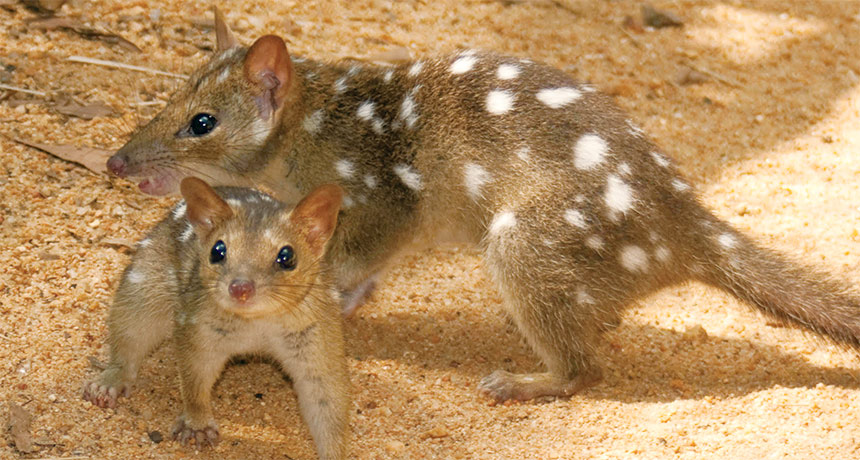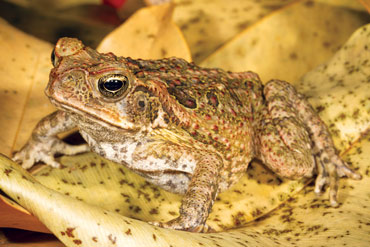Uh oh! New approach to saving this species imperiled it
Protecting Australia’s northern quoll from deadly predators can backfire, study finds

Scientists moved some northern quolls, such as these, to a predator-free island. After 13 generations, however, the quolls lost their protective fear of predators.
Jonathan Webb
Biologists working to save an endangered kitten-sized Australian marsupial may have put those animals in danger — at least once they return back to their home range. The species is the endangered northern quoll. Scientists moved some quolls to an island free of the poison toads that had threatened their survival. But a new study finds this appears to have undermined a key survival instinct: fear of those toads.
The quoll spent 13 generations — just 13 years — on the island. But that’s all the time it took to lose their fear response to predators. Researchers described the finding June 5 in Biology Letters.
“Evolution can happen very rapidly” for animals with fast breeding times, says Rick Shine. He’s an evolutionary biologist at the University of Sydney in Australia. He was not involved in the study.
Separating endangered species from predators is a common conservation technique. Zoos sometimes do this by raising animals in captivity. Other groups may raise animals in safely fenced enclosures. Such isolation allows an endangered species to build up its numbers before eventually being released back into the wild.

Populations of northern quolls have been falling drastically in recent decades. Invasive poisonous cane toads have been a big cause. Quolls and other animals that attempt to eat the poisoned toads quickly die. In 2003, Australia’s Northern Territory Government tried to preserve the quolls. Their tactic was to move 45 quolls to toad-free Astell Island. (It’s located off the north coast of Australia’s mainland.)
Christopher Jolly is a biologist in Australia at the University of Melbourne. In 2016, he was part of a team that tried to release some island-reared quolls back to the mainland after 13 years in isolation. But they quickly put a halt to the program. Feral cats and dingoes (a type of wild dog) killed many of the new arrivals.
To figure out why, the researchers tested the fear responses of four groups of quolls. These worked with wild mainland quolls, island-born quolls and the offspring from both groups. Quolls from each group were given boxes of mealworms, a food quolls like. Some mealworms had no scent. Others were tainted with the scent of either feral cats or dingoes.
Wild quolls shied away from worms that smelled like their natural predators. The island quolls, however, gobbled up the worms. Quoll babies from each group responded the same way the adults had. That suggests the fear response was not something the animals had learned from their parents. It appeared natural to the wild quolls — but had been lost in the island-living animals.
The study’s findings may have lessons for other programs that aim to save endangered animals. Australia is home to plenty of unique animals found nowhere else. And an increasing number of these have become threatened or endangered with extinction. “For many of Australia’s mammals, the future is fenced,” says Alexandra Carthey, who was not involved in the study. She’s an ecologist at Australia’s Macquarie University in Sydney.
There may be a few other solutions. Mainland quolls might be trained to avoid the cane toad. That wouldn’t require taking them from their native habitat. That’s one finding from a study by Jolly and his colleagues. They published it last October in Austral Ecology. Another option: A small number of predators might be added to the isolation locations. Too many would threaten the ability of quolls populations to grow to healthy numbers. But just enough might just put a healthy fear of those predators back into them.







